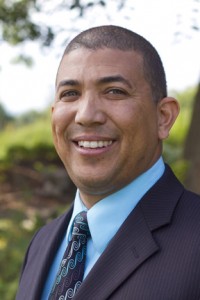Luke A. Hartman is vice president for enrollment at Eastern Mennonite University, and a member of the Communities of Hope Team for Mennonite Church USA. In August 2012 he presented a paper at the Mennonite Higher Education Faculty Conference titled, Why ‘diversity’ is not a choice but a gift and responsibility of faithful living as Christians. His paper remains relevant for Mennonite institutions and congregations, especially as trainings on intercultural competency are happening across the country. Due to length, his paper will be presented as a three-part series. This is part one. Find part one here and also part three.
In a 1997 article entitled Down with Diversity, Keith Denton, from Missouri State University, posited that diversity has the potential to dilute the cultural identity of an organization.[1] It appears that our institutions of higher learning may have that same fear because we sincerely speak politically correct rhetoric but seem hesitant to bring in the very students who threaten historical narratives and cultural values.
The need to preserve the university’s core values and beliefs makes it difficult for it to fully embrace those who do not look nor believe like the majority of its constituents. Our emphasis on peace and social justice and living in community ought to position us perfectly in the 21st century to embrace diversity in all its fullness.

An additional observation is that, at times, Mennonite colleges tend to be more active in explicitly welcoming and accepting international diversity as compared to domestic diversity. This allows the institution to maintain a sense of segregated pluralism.
While working at one particular Mennonite institution I noticed the campus was enriched by a large percentage of international students, more than any of the other Mennonite schools at the time. This deserved to be celebrated, and yet it did not equal the full reality of diversity, including all its domestic dimensions.
I want Mennonite colleges and universities to perceive diversity not in terms of a hierarchical value of cultures, but as an opportunity to create a culture of acceptance. This fosters a sense of belonging among all persons by recognizing and respecting difference and in doing so, promoting a sense of loyalty to the college or university.
Our diversity cannot just be a diversity of assimilation and acculturation. This suggests that as long as one behaves like the dominant campus group, sheds a particular set of values, norms and/or beliefs and especially does not over emphasize individual cultural distinctiveness then, and only then, will there be a welcoming and acceptance into the larger community.
Studies on cognitive development show that critical thinking, problem-solving capacities and cognitive complexity increase for all students exposed to diversity on campus and in the classroom. Diversity leads to the possibility of an enriched and engaging environment where greater learning and skill development is possible. It broadens perspectives, it provides increased exposure to alternative viewpoints, and brings more complex discussions and analysis.
Educational researchers state that attending college in one’s home environment or replicating the home community’s social life and expectations in a homogeneous college impedes the personal struggle and conscious thought that are so important for identity development.
The biblical text says that a “mixed multitude” came up out of Egypt with Moses. (Exodus 12:27-38). The NIV says “many other people went up with them.” In other words it wasn’t just the descendants of Abraham that came out of Egypt. Many others that the Egyptians had enslaved came out with them.
The Exodus passage stands in contrast to Ezra and Nehemiah after the Babylonian exile. Those passages told the Israelites to put away their foreign wives and the children they had with them. The Ezra and Nehemiah passages cared more about maintaining ethnic purity and racial exclusiveness than they did about being a light to the Gentiles as the people of God.
By the end of the Old Testament story, Israel moved from celebrating diversity and inclusion to an exclusive group with a singular narrative. It asserted that God could not work with any more and thus we have the coming of Jesus to start over.
Jesus celebrates diversity as seen in the twelve disciples he called. Jesus even uses the contextual oxymoron, “the Good Samaritan.” He treats tax collectors and Roman soldiers with respect. He elevates women in a way unheard of in his day. In 1 Corinthians 12:12-22, Paul discusses how the Christian body is composed of a variety of people and that it is this diversity which adds to the effectiveness and giftedness of the body as a whole.
“And if they were all one member, where would the body be? But now indeed there are many members, yet one body. And the eye cannot say to the hand, “I have no need of you”; nor again the head to the feet, “I have no need of you.” (New King James Version)
Acts 10:34-35 states, “Then Peter replied, ‘I see very clearly that God doesn’t show partiality.’”